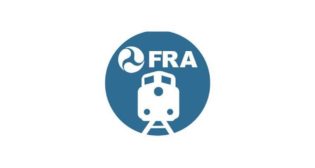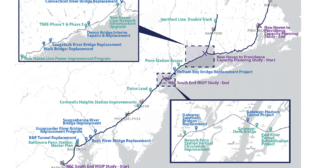
TIGER V advances CAGTC transport projects
Written by William C. Vantuono, Editor-in-Chief• Florida Department of Transportation (FDOT) Florida Freight & Passenger Rail Enhancement.
• Mississippi Department of Transportation Mississippi River Bridge Rehabilitation.
• San Diego Association of Governments [Amtrak] Pacific Surfliner Coastal Railway Bridges.
• Maryland Port Administration Port of Baltimore Enhancements.
FDOT’s Florida Freight & Passenger Rail Enhancement will be used to improve the linkage of Southern Florida’s two major freight rail carriers—CSX and Florida East Coast Railway—to improve service and, working with the South Florida Regional Transportation Authority (SFRTA), passenger rail connectivity in the region.
“This grant will allow FEC to handle more traffic from Port Miami and Port Everglades as well provide flexibility for freight movements in South Florida,” said FEC CEO Jim Hertwig.
USDOT said that demand for the TIGER program outweighed available funds, and during all five rounds, USDOT received more than 5,200 applications requesting more than $114.2 billion for transportation projects across the country. The TIGER program has distributed roughly $3.6 billion to a total of 270 projects throughout its five funding rounds.
The Eno Center for Transportation released a report in April titled “Lessons Learned from the TIGER Discretionary Grant Program” that provided an in-depth analysis of the program’s execution, highlighting elements such as the program’s cost-benefit analysis, broad modal eligibility, cost-share requirements, wide-ranging agency eligibility, and provisions to promote geographic and rural/urban distribution. “Freight has competed well in the previous rounds of TIGER in large part due to these elements, specifically broad modal eligibility and the call for benefit-cost analysis, the outcome of which often elevates freight projects among other applications,” Eno said.
TIGER I in February 2010 provided grants to 51 projects, 22 (43%) of which contained a strong freight component. Those 22 projects received 49% of the available funds, totaling more than $730 million. In October 2010, TIGER II projects with a strong freight component received $316 million (53%) of the $600 million in available funding. In December 2011, TIGER III funded 46 projects, 18 of which were devoted to freight or had a strong freight component accounting for over $232 million (45%) of the total $511 distributed. TIGER IV, awarded in July 2012, provided funding for 47 projects, 21 of which were devoted to freight or had a strong freight component accounting for over $228 million (47%) of the total $485 million distributed.



